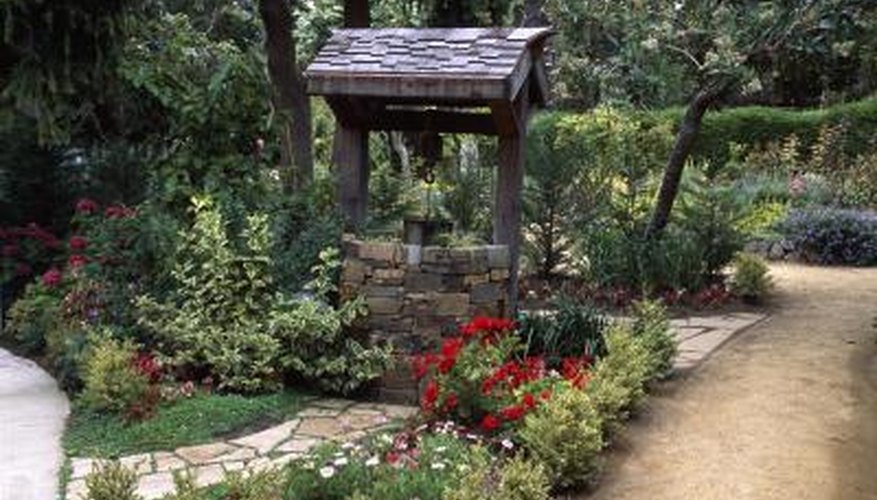Victorian garden wells offered elegance and convenience to gardeners when they were first installed over 100 years ago. Today, an empty dry well is a hazard to children, adults and pets. You can preserve the aesthetic charm of a Victorian well by filling it in and converting the top into a raised plant bed. Filling a well is laborious and requires professional equipment, but it's the best way to prevent dangerous falls.
Check that all working drainage systems and pipes do not filter into the well. Any seeping water will destabilise the well.
Pry the first two rows of blocks from the well and let them fall into the well if you do not plan to convert it into a raised plant bed.
- Victorian garden wells offered elegance and convenience to gardeners when they were first installed over 100 years ago.
- Pry the first two rows of blocks from the well and let them fall into the well if you do not plan to convert it into a raised plant bed.
Pour sand into the well until you are within 12 inches of the top.
Use a tamper machine to compact the sand until it is firm. Compacting the sand prevents it from shifting over time. If you don't own a tamping machine, you can rent one from a home improvement store.
Add a 2-inch layer of gravel over the sand for drainage. Fill in the 10 inches that remain with native top soil.
- Pour sand into the well until you are within 12 inches of the top.
- Add a 2-inch layer of gravel over the sand for drainage.
Plant a bed of miniature roses or low-growing flowers in the top soil. As a nod to the Victorian era, you can arrange flowers in a geometric pattern or plant clusters of pink and pale blue flowers to resemble the lush fabric used in Victorian homes.
Spread a 2-inch layer of mulch around the plants to prevent weeds from growing and retain moisture in the soil.
TIP
You can purchase sand in bulk at local nurseries and home improvement stores.
